A Guide to Building Effective Product Feedback Loops

Many companies know how to collect customer feedback, but struggle to create continuous feedback loops for valuable, actionable information informing objectives.
In this article, we’re going to see:
- How continuous feedback loops can improve your product
- The best ways to collect customer feedback
- How to engage customers with surveys
- What to do after customers provide feedback
Let’s get started!
What are feedback loops and why should product teams use them?
So what are product feedback loops?
In his book Lean Startup, Eric Ries explains the fundamental activity of a startup is to turn ideas into products, measure how customers respond, and pivot or persevere.
This serves as the basis for a framework he calls the “build-measure-learn” process:
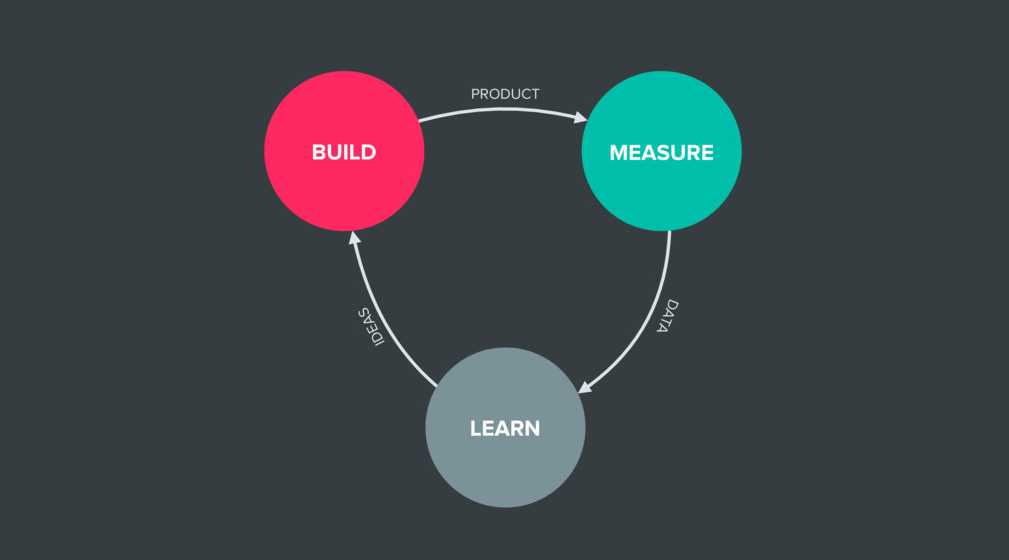
- Build the product: Turn an idea into something tangible that customers will love.
- Test the product: Measure if customers love it.
- Improve the product: Learn from mistakes to build what customers will love.
In other words, the product feedback loop is the process of collecting customer feedback continuously and improving your product based on these insights.
The product feedback loop is the process of collecting customer feedback continuously and improving your product based on these insights.
Build and test early-stage ideas
Building early-stage ideas can help create product feedback quickly and efficiently.
Ben Garner at Strategyzer shares cost-effective ways using brochures, datasheets, and UI mockups, which are tangible and can be put in front of users right away.
Prototypes are another good way to go, because they effectively capture the vision of your product’s future and how it will serve customers’ needs.
If aiming to test for functionality, you only need to build enough to deliver an outcome that users can respond to. If you aim to test your product’s “fit and finish,” then you may need to build the product closer to its final intended design. Ultimately, the goal is to build something to put in front of users to start collecting learnings right away.
Measure your product feedback
Now it’s time to see if customers love what you’ve built as much as you hope. Here are the best ways to collect customer feedback and begin your feedback loop:
Customer interviews
Customer interviews are invaluable for product teams to learn about user needs, problems, pain points, desired solutions, and other feedback.
There are many different types of customer interviews, including customer validation interviews, persona development interviews, and usability studies. The real value of these interviews lies in the complexity of the feedback you’ll receive, going a step deeper than any other type of customer feedback.
Customer surveys
Customer surveys are an important part of every product feedback loop — especially because most are conducted either inside the product or soon after users begin using it.
What are the pros and cons of customer surveys?
The biggest advantage of surveys is they correlate with user experience. In other words, after users interact with the newest feature in your product, you can immediately ask for feedback. However, even though the simplicity of surveys is likely to increase response rates, they may be limiting because you aren’t present to clarify answers.
Here are three of the best user surveys for your product feedback loop:
NPS survey: Measure customer loyalty
The Net-Promoter Score, the most popular survey type, measures your customers’ loyalty to your product. Here’s an example from Unbounce:
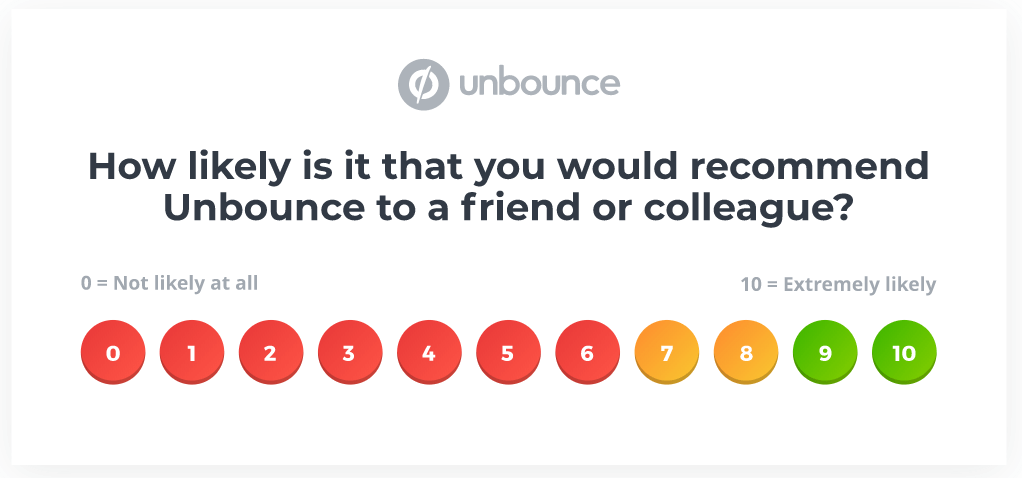
You segment customers into three groups based on the feedback you collect:
- Promoters: People who answered with 9-10. Promoters will very likely refer your product to a friend or colleague.
- Passives: People who answered with 7-8. Passives are satisfied with your product, but they’re not addicted to it.
- Detractors: People who answered with 0-6. Detractors are unsatisfied with your product — there is also a chance that they will spread a negative word about it.
By identifying those who are ready to promote your product, you’ll know where to allocate your resources to boost your referral marketing efforts. By determining those who are unsatisfied, you proactively change your product and your users’ minds.
CSAT survey: Measure customer satisfaction
The Customer Satisfaction Score survey (CSAT) measures satisfaction for in-app experiences, whether individual features or overall onboarding satisfaction.
Here’s what Hubspot’s CSAT feedback survey looks like:
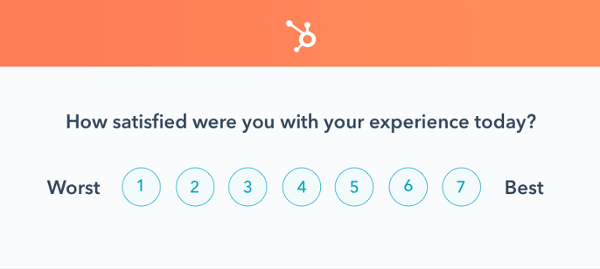
The CSAT’s biggest strength over other user surveys is simplicity. It’s very easy to close the feedback loop and gather valuable information about specific user experiences.
Use CSAT to measure customer satisfaction after a user activates a feature or experiences an aha moment before a renewal or upgrade, or after receiving support.
CES survey: Learn if your product is easy to use
CES stands for Customer Effort Score. It measures how much effort customers need to invest in order to complete a task within your product. Together with user onboarding tools, CES surveys show you how difficult your product is to use.

So, what’s the best time to ask for the Customer Effort Score?
- After users use a newly-released feature
- After users reach a milestone or experience success with your product
- After making contact with customer support or using the knowledge base
- After interacting with the product that led to payment, subscription, or an upgrade
Protip: Try using exit-intent surveys in the first-run experiences.
Other methods
Here are other ways to build effective customer feedback loops:
Product betas
By creating a public or private customer beta, your target users test product functionality before it’s live. During this time you solicit feedback from them, as well as host customer calls to understand their experience and needs for improvement.
Digital experience analytics
Use FullStory’s Productboard integration to capture critical issues spotted in actual users’ Session Replays, like user confusion or pain points.
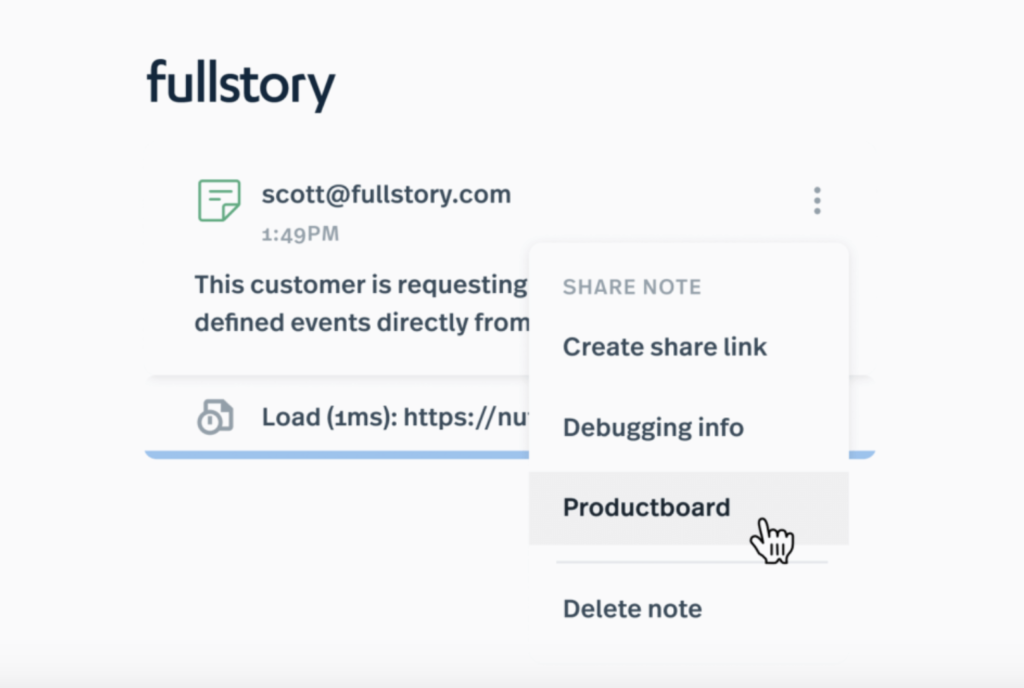
Productboard’s Salesforce integration
Identity feedback directly from customer success teams by capturing customer data from Salesforce into Productboard.
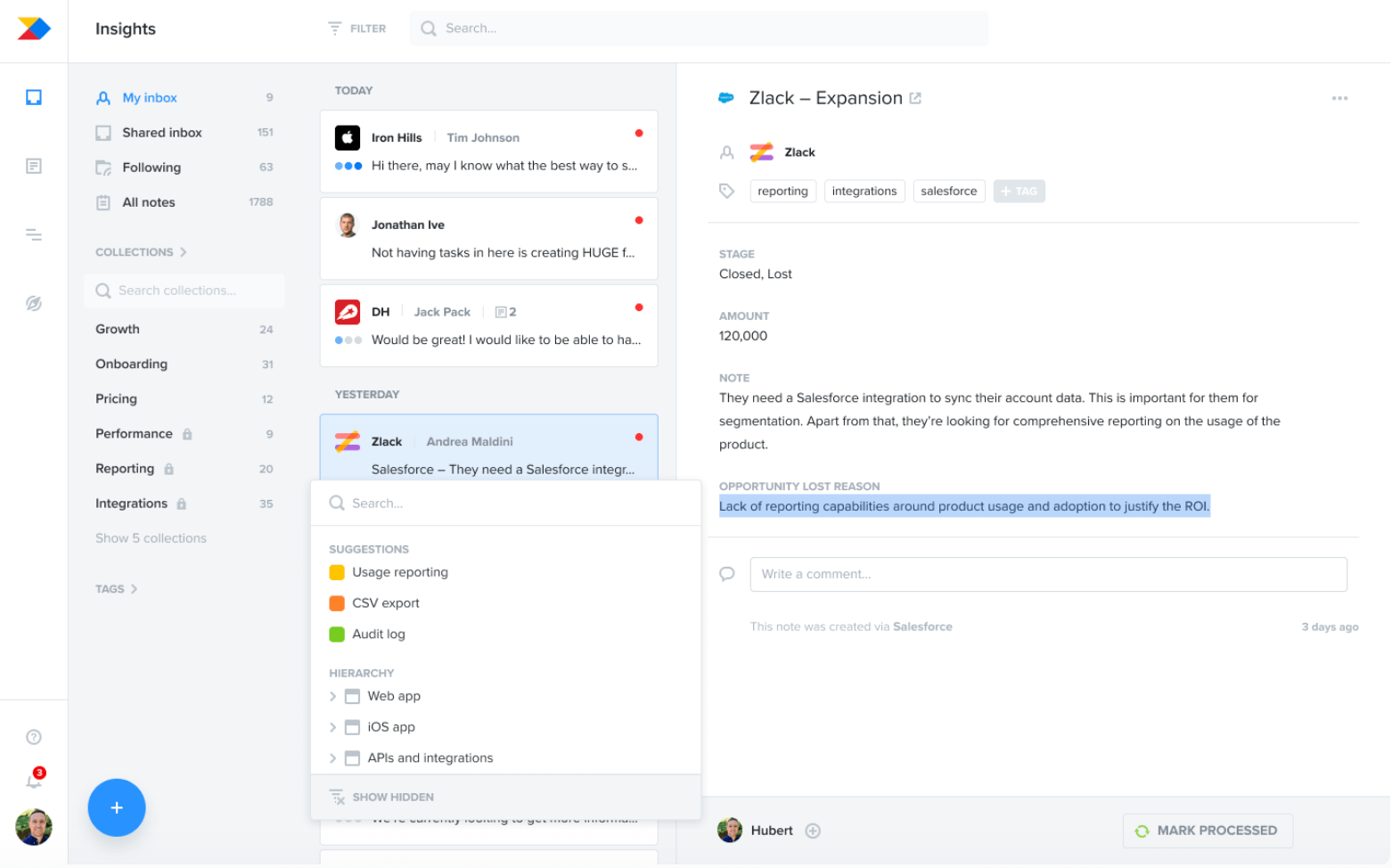
Portal
Validate feature ideas still under consideration from customers and prospects at scale with a Portal. Learn which would help most and why, and even source brand new ideas/requests. All new ideas and feedback submitted are routed to your Insights board for you to analyze alongside inputs streaming in from other channels.

Customer support
Customer support reps offer a wealth of useful feedback because they talk directly with customers all the time. You’ll gain a better understanding of customer problems, bugs, feature suggestions, opinions, and more. You can integrate your customer support tool — like Zendesk — with Productboard to automatically send feedback to Productboard.
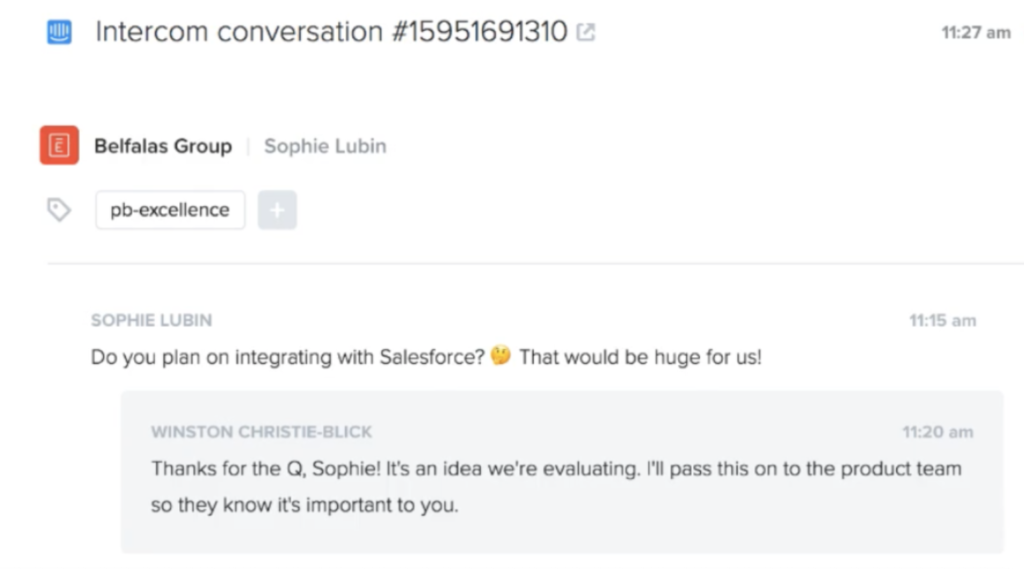
Product usage metrics
Product usage metrics are a great way of discovering customer feedback. Look for patterns in software analytics using tools like Amplitude — they’ll help you gain an understanding of how different features are being used.
Sales
Your sales department is in constant contact with your prospects, enabling them to find out what motivates them and major pain points. Using Productboard’s Salesforce integration, product teams capture valuable product feedback from all won and loss Salesforce opportunities and identify dealbreakers for prospects and customers.
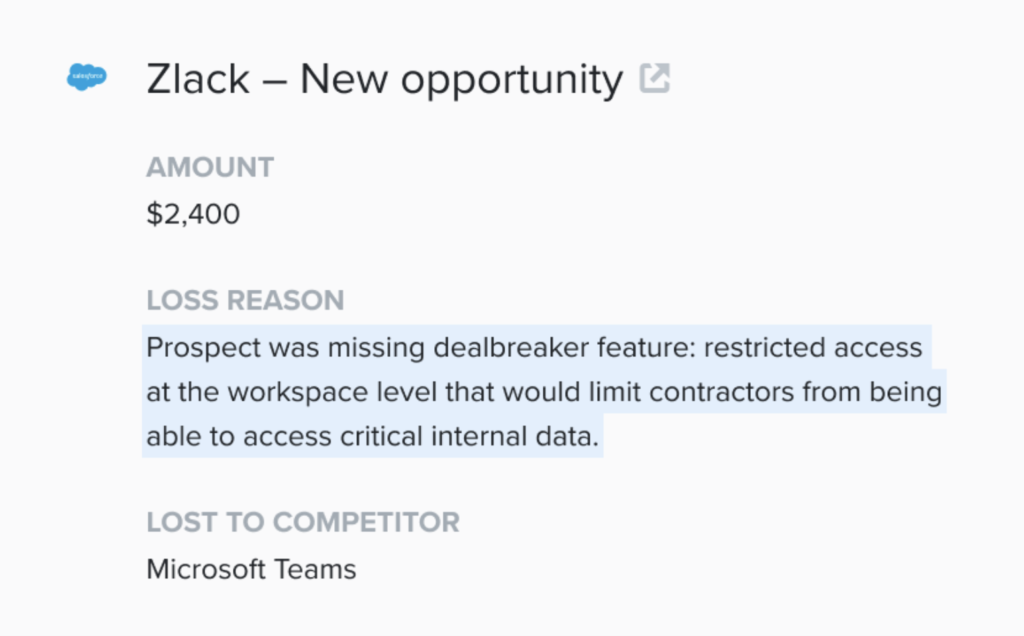
Employee feedback
Diverse perspectives within your company provide useful — and sometimes surprising — insights from customers and prospects. Capture their feedback seamlessly via Productboard’s Slack and Microsoft Teams integrations.
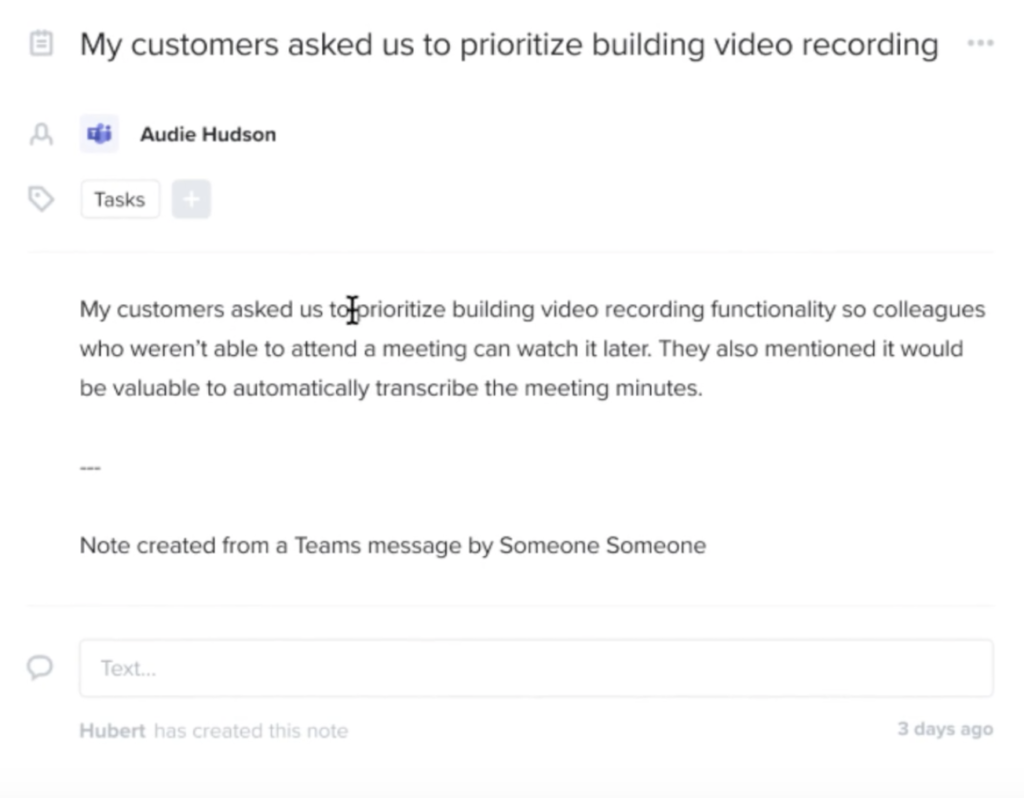
Social Media
Customers often provide feedback through chat platforms or leave comments on various channels. Make sure to keep an eye out.
Continuously improve how you capture product feedback
Anyone can gather customer feedback. But what comes afterward is important as well:
Decide what feedback to prioritize
What will be your main source of feedback and will you have multiple sources? In-app user surveys, email surveys, customer interviews, support requests, or something else?
Create your “feedback storage”
Where will you store your feedback? You can use spreadsheets, forums, or another tool. A product management platform like Productboard provides a central repository for all product ideas and feedback from teams across the company.
Define processes and workflows
What is your feedback loop is going to look like?
To build the best possible product for your customers, you need to validate different solutions based on feedback. This brings you right back into your feedback loop. It’s a non-stop process you use to keep making your product better.
The bottom line
As you can see, feedback loops are very important for product teams. Well-defined feedback loops help you to store valuable information, make necessary changes, and build a product that customers will truly use and love.
…
Aazar Ali Shad is the VP of Growth at Userpilot and has more than 5 years of SaaS Experience. He is currently helping 500+ SaaS companies improve their user onboarding and increase product adoption.
Productboard is the customer-centric product management platform that helps teams get the right products to market faster. Over 5,000 companies, including Microsoft, 1-800-Contacts, and UiPath, use Productboard to understand what users need, prioritize what to build next, and rally everyone around their roadmap. Access a 15-day free trial of Productboard today.





